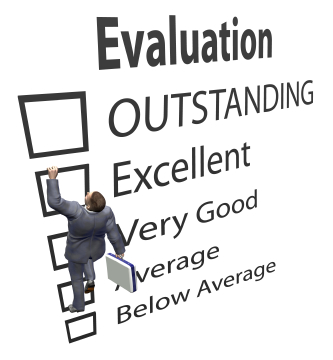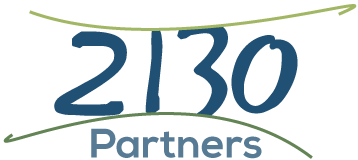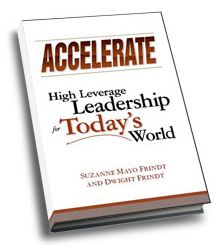The work of 2130 Partners is featured in this article by Dana Borowka of Lighthouse Consulting.
Recently, we have had a number of conversations with CEOs and key executives regarding what they are planning for their businesses for 2011. We have found two categories of individuals. Those that have a vision through listening to others in the market place, reaching out for support, gathering industry data, looking for trends and opportunities. The other group is totally focused on overhead reduction, darting around and focusing on the bad news in the world, taxes, health bills, and any information that they can grab onto to help justify why they are so scared.
Here is the Question for the Day
Which category do you fit into? Your answer will determine how your company is doing today and will be doing in the future. Those that think they know everything are closing themselves off from amazing opportunities.
Certainly all companies need to be constantly looking at overhead and keeping up with the news. However, when the focus is fear driven then our thoughts begin to justify our fears. That wastes time as it creates the continual loop of fear, depression, anxiety, etc.
The group that is forward thinking has a completely different outlook on life. That’s not to say that they don’t have concerns but rather they are using this time to plan ahead, remain clear headed and open to ideas. That is the key – to be still enough in order to listen. Then act on what we are seeing as immediate and future potential for new products and services, improvement in retention of current business as well as ideas for gaining additional market share.
Your focus will tell you immediately where you stand! First, we will explore leadership and how to deal with the fear. Then we’ll share what a group of business owners did that has separated them from many other companies.
How to Become a Vision-Focused Leader
The answer is leadership. It is time to become a vision-focused leader around whom issues can be raised and resolved productively. That’s the view of Suzanne and Dwight Frindt, the founders of 2130 Partners, a leadership development and education firm that facilitates focused vision, inspired teams, and sustained commitment for its clients and co-authors of Accelerate: High Leverage Leadership for Today’s World.
Ask yourself these questions:
- Are your conversations with your team generating the results you want?
- Does your team successfully raise and resolve issues relevant to business success?
- Can you identify and deal with emotional upsets, in both yourself and others?
Exactly what is this leadership that is vision-focused? "We love Warren Bennis’ definition: 'Leadership is the wise use of power. Power is the capacity to translate intention into reality and sustain it,'" says Suzanne Frindt. "Our approach is the same whether we are working with individuals or with entire leadership teams. We believe the greatest opportunities are created by the development of people and action in a coordinated direction. We assert that the only sustainable strategies engage the heart and soul and are simultaneously grounded in sound business practices."
Power of Shared Vision
In a 1996 article in the Harvard Business Review entitled "Building Your Company’s Vision," Jim Collins and Jerry Porras said that companies that enjoy enduring success have a core purpose and core values that remain fixed while their strategies and practices endlessly adapt to a changing world. The rare ability to balance continuity and change—requiring a consciously practiced discipline—is closely linked to the ability to develop a vision.
"Without a vision, what is the point?" says Suzanne Frindt. "A Yonder Star unleashes the energy to galvanize yourself and your employees so you can achieve phenomenal things."
When group members share a vision, it creates an opportunity for totally different conversations between a manager and members of their team. Focus on the shared vision creates alignment and provides a powerful context for creating mission, strategic initiatives, objectives, goals, roles, and finally all the way down through action plans.
Being a manager means making choices. At any moment in time you have a decision to make. Suzanne urges that when it comes time to make a decision being present in the moment, not on automatic pilot, is essential to the quality and relevance of the decision. You can then make the choice based on your Yonder Star, your shared vision of something to which you aspire, versus more of the same or your fear of some worst-case scenario.
"Worries are about envisioning a worst-case scenario, what you fear most," says Suzanne Frindt. "Whatever we envision is affecting us right now. What we envision impacts us in this moment. There are consequences for managing based on fears that you may not want. Your Yonder Star is the shared vision you aspire to. The star is what you envision, and what you envision shapes both the present moment and the quality of your choices about your actions."
Something else she recommends avoiding is being past-focused. This is when you make decisions based solely on what you have done in the past. Instead of having an inspiring vision for your team, all you are working for with a past based focus is attempting to minimize perceived risk and making incremental improvements.
"Many companies are past-focused when they do strategic planning," says Suzanne Frindt. "What did the company do last year and then let’s add 10 percent or 20 percent. We are all tempted to try hard to make yesterday look like today. Or if we didn’t like yesterday, then we try to make it different or better."
She adds that only by having a vision, a Yonder Star, can teams create breakthroughs to unprecedented results. Equally important is that it is a shared vision, one that is based on shared values and shared operating principles. This is how you create an environment for real collaboration.
Overcoming Emotional Barriers
"The ability to identify and clear upsets, in myself and others, is the single most significant key to productivity gains in our economy today," says Dwight Frindt. "We have asked our executive-leadership clients a simple question: 'What time could you go home if everyone in the company simply came to work, did their jobs, and went home?' The answer used to surprise us until it kept being repeated. On average, our clients say, ‘Between 10:30 a.m. and 11:00 a.m.'"
That begs a second question. If so many executives claim they could go home before lunch if everyone just showed up and did their work, what’s taking so much of our leaders' time? The Frindts' clients tell them flat out: distress, commonly known as upsets. The most time-consuming part of their job is managing the distressed interactions within their teams so that those teams can actually get to the business at hand.
"Even if executives will never be able to consistently leave by noon, it is entirely reasonable for them to expect to save at least two hours of their time, every day. Alternatively they could increase their productivity 15–30%" says Dwight Frindt.
That’s nearly 500 extra hours a year leaders can devote to creative thinking, visioning, and strategizing rather than on repairing relationships and soothing bruised egos. At the opportunity cost of most executives’ time, that amounts to very substantial savings. Of course, the same can be said for everyone in the organization. An inordinate amount of productive time and payroll dollars and worse yet, opportunities, are lost daily, monthly and annually to the distraction caused by unresolved emotional distress.
Replacing that time, energy, and resource loss is of paramount importance. Doing so can create a culture that is both highly productive and emotionally resilient and rewarding. It requires a fundamental, transformative shift in two steps: 1) fewer emotionally driven issues in the workplace; and 2) leaders and their team members becoming self-sufficient in handling emotional distress issues when they occur.
"Let’s clarify what we mean by emotional distress," says Dwight Frindt. "We’re using the term to summarize a wide range of reactions that temporarily disable people with regard to thoughtful and productive behavior. These reactions can vary from mild frustration to full-blown anger, and include embarrassment, sadness, impatience, agitation, worry, and fear. In each case the person is left in a condition where, whether realized or not, they are acting as if their very survival is threatened."
The Causes of Emotional Distress
The Frindts' studies and their clients' experiences make it clear that the most common root causes of workplace emotional distress are 1) the perception that a promise has been broken (usually by leadership); 2) when positive intentions "fail"; and 3) when commitments seem thwarted. In addition to these three internal triggers, there are many times when personal distress is brought to the workplace from the rest of the person’s life. These other sources can be especially difficult to address, due to varying perspectives on what constitutes personal-professional boundaries.
The impact on the productivity and organizational effectiveness of people attempting to work while "stressed out" (or surrounded by others who are) is enormous. Yet it’s been the Frindts’ observation that most leaders overlook this as the place to start any efforts in business improvement. Most are far more comfortable with cost cutting, process development, process improvement, reorganizing, or some other business change that does not directly address the human dimension.
Long Term Vision & Working the Plan
Back in 2006/2007, a group of business owners saw the writing on the wall regarding the long term economic change. While some people thumbed their noses at the possibility and buried their heads in the sand… purely out of fear. The forward looking group sought feedback from others who had been through similar business cycles and discovered the following ideas:
- Create your vision: The goal is to have a long range vision for your company.
- Think outside your box: What else can you provide? What other opportunities can you look at? What are some other possibilities that will help others to fulfill their vision?
- What is needed: Listen to the market place and offer valuable services.
- Know your numbers: Where are you and where are you going?
- Work the plan: Develop measurable marketing, sales, financial, internal operations plans then execute and don’t wait. This avoids waste and preserves valuable resources. Through proper planning the dollars can be used to gain market share while other organizations could be financially drained and in a constant state of fear! The forward business group took a three year outlook and developed various action plans and worked the plan.
- Be on the lookout for top "A" and "B" players for hiring top people who have vision.
- Team vision: Have clear goals and objectives for all staff members.
- For new hires at all levels do the most thorough interviewing based on 30-60-90-180-12 month goals.
- Do in-depth work style and personality assessment testing to get a clear picture of who you are about to bring aboard to best manage the individuals so they can be successful.
- Maintain a collaborative team environment where everyone can provide input to create internal efficiencies, all are listening to customer and market needs, and respond in a timely way so your company is always engaged as the business environment has needs.
This is the time to be moving forward by offering fresh ideas, solutions, and support that will add value to all those you come in contact with and in return your business will thrive!
To find out more about these topics you can read our book, Cracking The Personality Code by visiting www.lighthouseconsulting.com. Or if you’d like to find out about the various workshops we provide to help your organization lead into the future visits www.crackingthepersonalitycode.com. We are looking forward to hearing from you.
We offer monthly Open Line web conferences on topics ranging from creating a collaborative environment, how to offer incentives to staff during challenging time, and how to turn fear into strength. We will be having a global futurist as a guest – so please join us. Visit www.lighthouseconsulting.com for a list of our programs.
Permission is needed from Lighthouse Consulting Services to reproduce any portion provided in this article. © 2010
If you would like additional information on this topic or others, please contact your Human Resources department or Lighthouse Consulting Services LLC, 3130 Wilshire Blvd., Suite 550, Santa Monica, CA 90403 & our website: www.lighthouseconsulting.com
Lighthouse Consulting Services, LLC provides a variety of services, including in-depth work style assessments for new hires & staff development, team building, interpersonal & communication training, career guidance & transition, conflict management, workshops, and executive & employee coaching. To order the book, "Cracking the Personality Code" please go to www.crackingthepersonalitycode.com
 “If you expect performance, then make it [meaning your expectations] ’acutely clear’ so people have the opportunity to succeed.” -- Jim Moats
A very thoughtful leader, friend, and fellow Vistage Chair posted, “The Way Things Work” on his Peer Place blog and got me thinking about a provocative question one of our CEO clients asked the other day. We were discussing one of the people in his firm who has been producing extraordinary results from being in a coaching program. Her performance had become a major turn-around. Her comment to our coach was, “why didn’t anyone ever tell me…?” meaning, she had no idea she had been "missing the mark" to such an extent. When discussing this with the CEO, his question was “ I wonder how many good people are let go every year because no one ever communicated or invested in their success?"
“If you expect performance, then make it [meaning your expectations] ’acutely clear’ so people have the opportunity to succeed.” -- Jim Moats
A very thoughtful leader, friend, and fellow Vistage Chair posted, “The Way Things Work” on his Peer Place blog and got me thinking about a provocative question one of our CEO clients asked the other day. We were discussing one of the people in his firm who has been producing extraordinary results from being in a coaching program. Her performance had become a major turn-around. Her comment to our coach was, “why didn’t anyone ever tell me…?” meaning, she had no idea she had been "missing the mark" to such an extent. When discussing this with the CEO, his question was “ I wonder how many good people are let go every year because no one ever communicated or invested in their success?" Being 'acutely clear,' (as Jim Moats describes), and in partnership with those around you, puts you in what we call in our book "Accelerate," the Productive Dialogue Zone. It takes courage and a willingness to give up control in favor of the outcomes you want. It also takes letting others participate in the “how” of getting there. By doing this you will need to challenge yourself to receive feedback on ideas and not take it personally. This actually makes your life as a leader easier. Allow your team to be rigorous and help think things through. Take the burden off of yourself and be inclusive.
Being 'acutely clear,' (as Jim Moats describes), and in partnership with those around you, puts you in what we call in our book "Accelerate," the Productive Dialogue Zone. It takes courage and a willingness to give up control in favor of the outcomes you want. It also takes letting others participate in the “how” of getting there. By doing this you will need to challenge yourself to receive feedback on ideas and not take it personally. This actually makes your life as a leader easier. Allow your team to be rigorous and help think things through. Take the burden off of yourself and be inclusive.
 Our book, "
Our book, " In her November 5, 2009 blog post entitled, “
In her November 5, 2009 blog post entitled, “